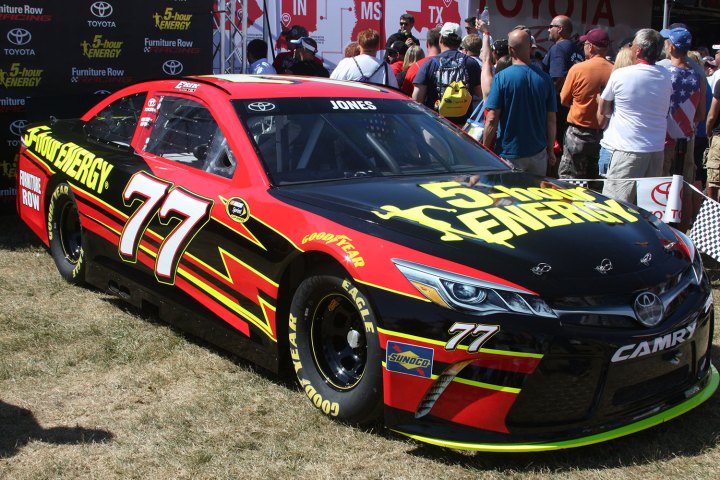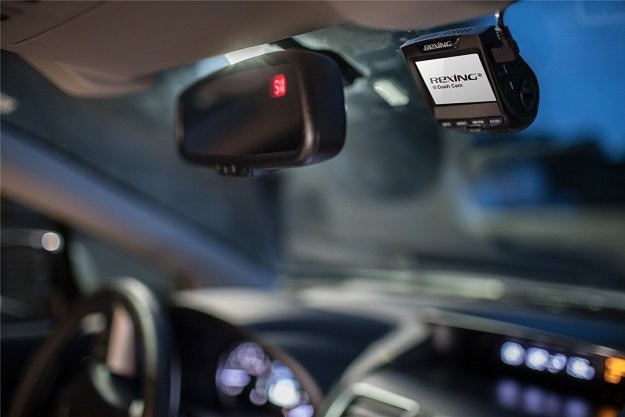
When it comes to spectator sports in America, NASCAR is king in terms of audience numbers. Football may claim the top spot in television views, but more fans flock to the races than any other sporting event.
With its history stretching back nearly 70 years to February 1948, NASCAR shares its historic start with the legendary Watkins Glen International race track, which was formed as a ragged road around the town of the same name in October that year.
Toyota took its Tundra pickup to NASCAR in 2004 for the Camping World Truck Series, and entered its Camry in the Sprint Cup Series in 2007. BK Racing, Joe Gibbs Racing, and Furniture Row Racing are now running Camrys in the Sprint Cup Series.
Toyota invited Digital Trends to Watkins Glen for the Cheez-It 355 and got a behind-the-scenes peek at the action that goes on behind and before a race.
Highlighting the event was the reveal of Toyota’s newest driver, 19-year-old Erik Jones. During a press conference, Barney Visser of Furniture Row Racing said that after much rumor and speculation, they were “very excited to have all the components of a second race team pulled together here.” With the addition of a talented young driver like Jones, Visser is confident that the team is “going to be able to run right up where we need to run.”
“I think Erik ascending to the Cup level, for Toyota, this is the first time a Toyota driver has grown from the grassroots ranks all the way through NASCAR’s national series,” said David Wilson, president for Toyota Racing Development USA. “I think it’s a great story for Toyota, but probably a greater story for NASCAR and the future of our sport.”
Erik Jones came up through the ranks, beating Kyle Busch in the Snowball Derby four years ago and winning his first NASCAR championship with Kyle Busch Motorsports last year.
Erik discussed his upcoming move to full time driver for Toyota in NASCAR’s premier series, saying “At the end of the day, I’m as ready as I can be. At some point you got to make that jump. You’re going to sink or swim. Like I said, I think I’m in the best situation to hopefully swim and be successful at it.”
After the press conference, Toyota led us around Watkins Glen, where we met just some of the people who work tirelessly to keep the team running strong. Martin Truex Jr., driver of the No. 78 Furniture Row Racing Toyota, has raced every year since 2000 and said that the big curves of Watkins Glen push him to practice harder on where to put his tires. The team has been testing tires with Goodyear all year.
Martin has taken Erik Jones under his wing, and says that while some drivers are a little wild on the road between races, younger drivers like Eric know better. He is focused on his bourgeoning career. “It’s a lot harder than you think,” Martin said. “The level is so much higher.”
David Wilson of TRD reminded us that while the engineering company spends much of its efforts on NASCAR, it also works in NHRA, Midget, and grassroots racing. Next year will see the Lexus RC F competing in the GT3 series.
“10 years ago a pit stop took 13.5 seconds, now we have it down to the 10s.”
“It takes 140 man hours to tear down a NASCAR from top to bottom,” David said. A pool of engineers divided up into groups such as “cylinder head guys and pump guys” work together to bring the car together and prep it for the track. Most of these technicians have mechanical engineering degrees.
Toyota’s production vehicles benefit from TRD’s racing development. “The experience from racing goes along to help people build Camrys and Tundras,” David said. “There is some crossover.”
We spoke with Erik Jones, who is looking forward to tapping his potential. “I am far from my best years as a driver,” he told Digital Trends.
We had to know what a professional like Erik uses as a daily driver. “It’s a Lexus RC F,” he said. It was given to him by Toyota and he jokes that it’s the company car. “If I didn’t have to give it back, I might modify it.”
Jason Ratcliff, crew chief for the No. 20 Camry driven by Matt Kenseth, wanted to be a driver but found that he was better at “turning a wrench.” The team begins inspecting the car three hours before a race.
“We check every nut and bolt and do a lot of safety checks,” Jason said. “The competition is so tight … we have 11-12 guys working Thursday to Sunday, and nine guys pit the car on Sunday. We have 20-22 guys on race day.” The car is reconfigured for the track — for example, NASCAR drivers as well as their fans have been pushing for use of the famous Watkins Glen “Boot.” If this segment of the track is incorporated into races, the cars would have to be adapted for it.
Mike Lepp, senior athletic director for Joe Gibbs Racing, stressed the important of fitness for the pit crew. Members are selected from among full-time athletes to become mechanics, shocks specialists, tire specialists, and more.
“10 years ago a pit stop took 13.5 seconds,” Mike said. “Now we have it down to the 10s.” For every three-tenths of a second lost, a driver could lose four spots.
The crew works with the driver to best determine what adjustments need to be done to the car. And what distinguishes a good driver from a bad one? According to Mike, “How much feedback he can feel through his butt.”
We had a great time at the races, and even got to experience a little action firsthand with a quick spin around the track in a Camry driven by David Ragan. Erik Jones’ No. 77 car was unveiled to a cheering crowd. We finished our day by watching the 90-lap race, which was won by Toyota’s own Denny Hamlin.
Editors' Recommendations
- With newly added AWD, Toyota’s Camry and Avalon are ready to battle winter
- Toyota is about to unveil a race car-like Supra concept inspired by the 1990s







